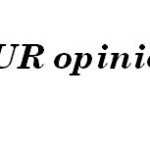Guest post: “Only”
The topic of proper word usage matters to my readers. So I perked up when Kim Blanton told me over coffee that she had a great explanation of how to use “only” properly. I immediately asked her to guest-blog for me.
By the way, if you haven’t read Kim’s Squared Away blog, it’s a terrific example of plain English writing about financial behavior.
Only
By Kim Blanton
You may want to ignore this column. After all, it’s only about improper placement of the word “only.”
But this common error distorts a writer’s meaning – and can even imply the opposite of what you intended.
I am ever-mindful of this issue when writing my blog about financial behavior and psychology, Squared Away. But here’s a fun example, involving March Madness. It appeared in an article about a win by my alma mater, Indiana University, titled, “Indiana Beats New Mexico State.”
Just to set up the game first. IU finished in the middle of the pack in the Big 10 season rankings. But they played well in a rebuilding year against the New Mexico State Aggies in the first round of the NCAA playoffs, winning 79-66. The Hoosiers forced turnovers, nearly matched the Aggies in rebounds, and disabled the Aggies’ secret weapon: its ability to get to the free-throw line an average of 30 times per game.
Here’s what the Herald-Times in Bloomington, Indiana, had to say about that: The Aggies also shot more free throws this season (1,048) than any other Division 1 team. But the Hoosiers only sent them to the line 10 times.
Only? You gotta be kidding! IU freshman Cody Zeller put it better than I could: “That was huge for us (italics added).”
The misplacement of “only” made it sound as though containing the Aggies’ free throws was unimportant (on closer scrutiny, maybe the sentence doesn’t make any sense). Here’s where the writer would’ve planted his “only” if he’d written what he meant:
The Hoosiers sent them to the line only 10 times.
The rule: “only” must be next to or as close possible to the word or phrase that it modifies – in this case, the number of free-throw attempts. [IU went on to beat Virginia Commonwealth University and faces powerhouse ranked Kentucky in the Sweet 16 – but that’s another issue altogether.]
It can be difficult to explain syntax, but here’s an easier example. Car keys in hand, you announce to your roommate or spouse, “I’m only going to the store to buy milk and bread.”
This means that you’re not going to Tahiti or the megamall – or the moon for that matter. As in: it’s not a big deal and I’ll be back in 15 minutes.
But if you mean that you’ll buy milk and bread but not salsa and chips, avocados, beer and chili fixings, you’d say: “I’m going to the store to buy only milk and bread.” Note that “only” follows the rule, sitting next to the words it modifies: bread and milk.
In conversation, proper placement doesn’t seem to matter much – things tend to work themselves out. But precision in writing is critical to clarity. Readers seeking to understand your meaning will re-read a sentence closely – sometimes more than once. You don’t want that careful reader to reach the wrong conclusion.
In her blog, Squared Away, Kim Blanton demystifies financial behavior for everyone, from young adults to retirees.



I believe I instinctively follow the rule about the use of the word “only” but am happy to read this useful reminder. Thanks!